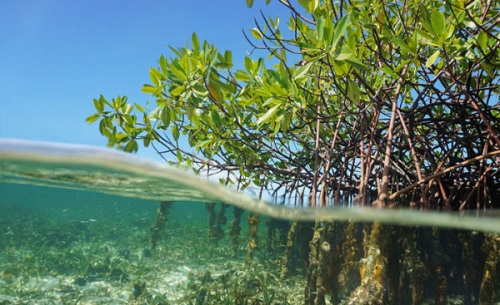Rising sea levels could drown Mangrove forests by 2050 if greenhouse gas emissions aren’t reduced, according to a new study published in the journal Science.
The mangrove ecosystems are generally found along saltwater coasts of 118 tropical and subtropical countries. Mangrove forests are among the richest sources of biodiversity on the planet as they provide habitat for thousands of species and protect coastline communities.
A tangle of mangrove roots can actually pull freshwater from salty seawater and serve as a nursery for fish, crustaceans, and shellfish. They create a barrier against destructive storm surges and stop encroaching seas from gobbling up more land protecting at least 5.3 million people. Mangrove forests store even more carbon dioxide than rainforests of the same size.
If their roots are completely submerged for too long, the mangroves will drown. The trees can usually adapt to rising sea water by moving inland, but human development along coastlines are now blocking their way.
If sea levels are pushed up too quickly past a certain point, the forests can’t keep up. The authors wanted to determine at which point it is too much, so they looked to ancient history and analyzed sediment data from 78 mangrove ecosystem locations across the globe for the past 10,000 years.
The team determined that mangroves are more likely to die out when sea level rise rates exceed 6 millimeters. Sea levels are already rising globally at a rate of more than 3 millimeters a year. Scientists expect we’ll exceed 7 millimeters per year by 2050 if global leaders do nothing to curb greenhouse gas emissions.
If they disappear, there’s going to be imbalances in the number of species that rely on them, and that could have effects on other species and the entire system including people. For instance fishermen depend on species that live in the ecosystems for their livelihoods.
One-fifth of the world’s mangroves already perished between 1980 and 2010. The world still has time to preserve them by reducing carbon emissions and keep the annual rate of sea level rise under 5 millimeters throughout the 21st century.











